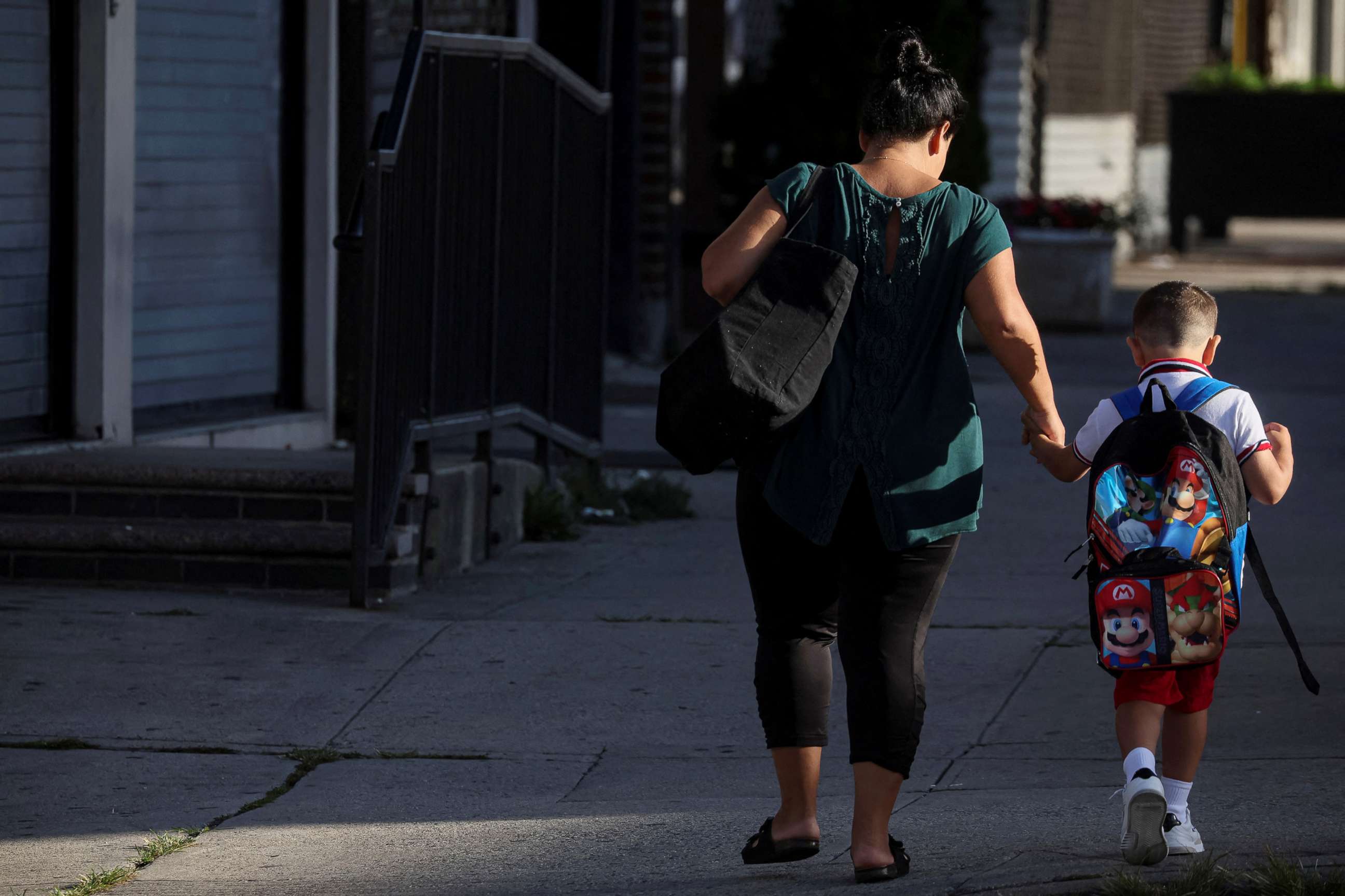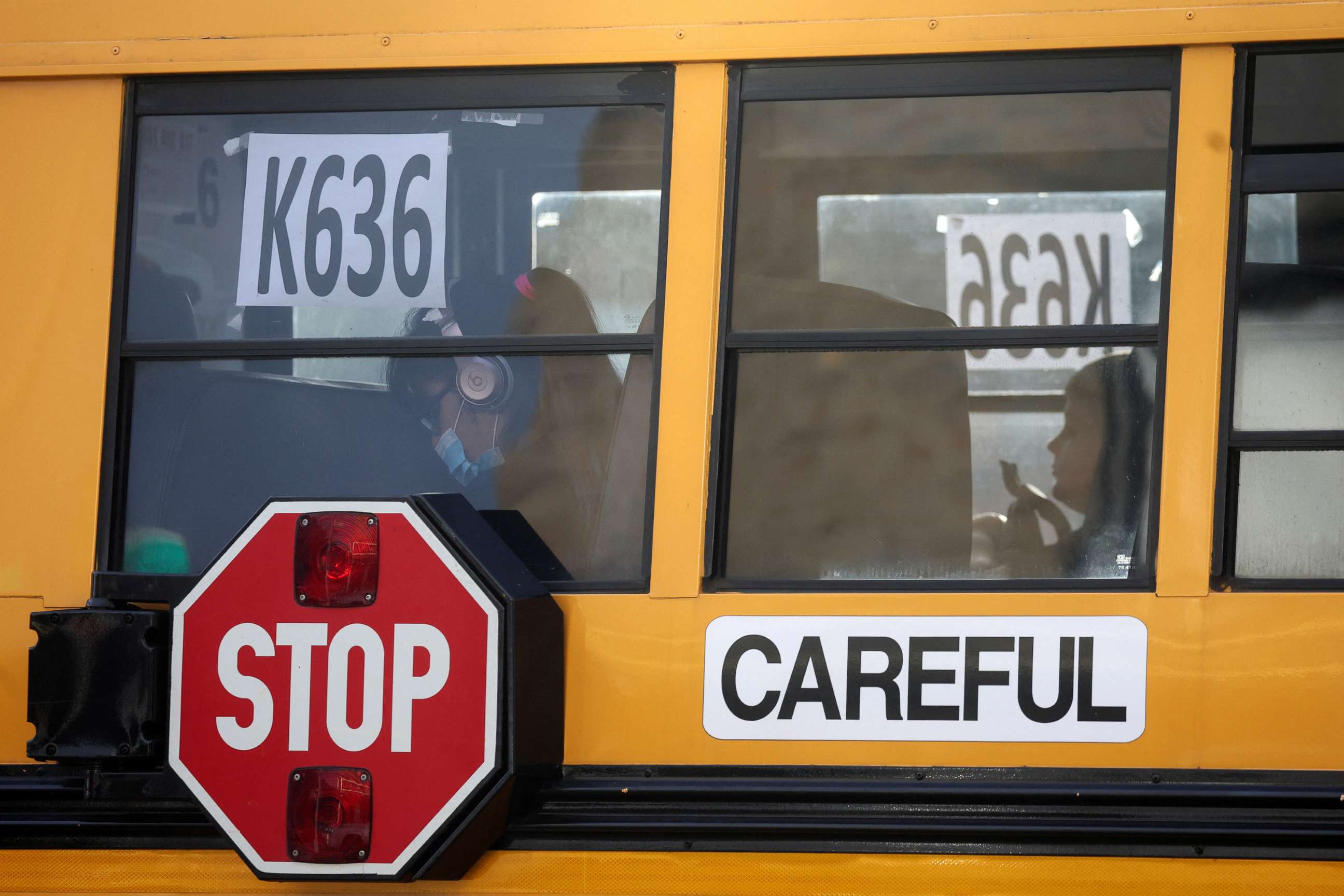Why COVID cases are not rising dramatically despite schools being open
Most children in the United States have returned to school for the year as districts aim to bring kids back to a setting that resembles the pre-pandemic normal.
Masks are now optional in most classrooms and, last month, the Centers for Disease and Prevention said it was no longer recommending schools use test-to-stay, which allowed students who were close contacts of those who tested positive for COVID-19 to continue to attend in-person classes if they remained asymptomatic and continued to test negative.
Dr. Greta Massetti, chief of the field epidemiology and prevention branch at the CDC, told reporters at the time that because unvaccinated and vaccinated people were no longer being advised to quarantine, test-to-stay was no longer necessary.
Cases and hospitalizations do not appear to be dramatically rising and adults have the highest rate of weekly cases per 100,000, per CDC data.
But experts said testing data is not robust as it was during the last two school years, making it difficult to compare current data to previous seasons.

"There's good reason to be cautiously optimistic," Dr. Jim Versalovic, pathologist in chief at Texas Children's Hospital, told ABC News. "It's important to point out that we have seen over the past several weeks a steady decline in COVID positivity and in COVID hospitalizations at Texas Children's."
He continued, "There's more at-home testing available and we don't have all the testing data, but we have enough data now to say confidently that positivity is down for COVID less than 5% in our latest rolling seven-day average and we also are now at single-digit hospitalizations, which is a big deal."
Adults still make up most COVID-19 cases
According to CDC data, weekly cases per 100,000 are higher in every adult age group compared to children. Children aged 5-11 have the lowest rate at 15.6 per 100,000 compared to those aged 75 and older at 41.6 per 100,000 with the highest rate.
What's more, the weekly case rate has massively declined since the summer. Just two months earlier, the case rate among 5 to 11-year-olds was 114.6 per 100,000.
Versalovic and other experts point out there are several reasons why there is not a major increase of COVID-19 cases seen among children during the new school year.
This includes less community spread in general; schools having better filtering of air; children being able to play outside, which is less risky for spread, before it gets cold; and vaccination.
Currently, 60.7% of 12-to-17-year-oids are fully vaccinated, according to CDC data. This is in comparison with 47.7% fully vaccinated at the same time last year.
Meanwhile, 31.4% of 5-to-11-year-olds are fully vaccinated. While uptake in this age group has severely lagged older children, vaccination. It's a substantial increase from 0.4% this time last year.
"That was not the case a year ago," Versalovic said. "One year ago, we were still trying to get vaccines to school-aged children. We've now had those vaccines available since last November and we've had boosters available throughout the summer."
However, he said that vaccination rates, particularly among younger children have been lower than he'd like to see. Only 1.2% of children under age 2 and 2.3% of children aged 2 to 4 are fully vaccinated, according to CDC data.
"We cannot be complacent about it." he said. "Vaccination rates have not been strong as we hoped. That gives us some pause as we look ahead to the winter."
Testing is down from last year
The number of tests have declined because testing has dropped dramatically in health care settings and in schools, experts said. Schools are also no longer running test-to-stay programs, so cases could be circulating undetected. Additionally, many people do no report positive at-home tests to health officials.
"There are some important caveats," Dr. John Brownstein, an epidemiologist at Boston Children's Hospital and an ABC News contributor, told ABC News. "We know that overall testing, test volume is down. Incentives for testing have changed, we've seen that reduction in test-to-stay programs."
"There is an argument to make that this could potentially be a calm before the storm as we approach colder months, more indoor activities, drier conditions that facilitate better transmission of respiratory viruses," he added.

Low rates of testing could be hiding potential surges in classrooms or underreporting asymptomatic cases.
Brownstein said there is cause for optimism because a new variant has yet to emerge -- the omicron variant and its subvariants have remained dominant for almost a year compared to 2021 when the dominant variant changed every few months.
"There's a lot of room for optimism, even in the face of a surge, because of the availability of vaccines and treatments," he said. "That being said, we've been surprised at every turn of the pandemic. And so, it absolutely makes sense for us to remain vigilant and utilize the best possible data to drive decisions."
Experts stressed the importance of children getting vaccinated, especially in case COVID-19 infections do surge in the late fall and winter.
"The No. 1 tool that we have to prevent disease are vaccines," Versalovic said. "These vaccines are safe and effective and, if anything, they've proven to be even more safe and effective than we ever could have imagined over the past year."
Brownstein added that certain children, such as those who are immunocompromised or live with a family member at high risk of severe disease, may want to consider other prevention measures such as masking.
"Even if masks or testing isn't required, these are tools that can still be used as needed, depending on your sort of risk tolerance and the risk of family members," he said. "Generally, we are at a good point right now where transmission is lower and we're not facing the threat of a new highly transmissible variant, but we have to remember that we have to be flexible as we continue this school year."




